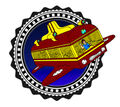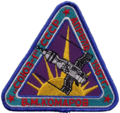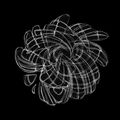Template:Selected anniversaries/April 23: Difference between revisions
No edit summary |
No edit summary |
||
| Line 37: | Line 37: | ||
||1908: Solomon Grigor'evich Mikhlin born ... mathematician of who worked in the fields of linear elasticity, singular integrals and numerical analysis: he is best known for the introduction of the concept of "symbol of a singular integral operator", which eventually led to the foundation and development of the theory of pseudodifferential operators. Pic. | ||1908: Solomon Grigor'evich Mikhlin born ... mathematician of who worked in the fields of linear elasticity, singular integrals and numerical analysis: he is best known for the introduction of the concept of "symbol of a singular integral operator", which eventually led to the foundation and development of the theory of pseudodifferential operators. Pic. | ||
File:Franck–Hertz experiment using neon.png|link=Franck–Hertz experiment (nonfiction)|1914: The day before the famous [[Franck–Hertz experiment (nonfiction)|Franck–Hertz experiment]], is presented to the German Physical Society, [[APTO]] field engineers discover a [[time bomb]] bomb within the experiment. The engineers will disable the bomb by cutting both the red and the blue wires, moments before Franck and Hertz begin the experiment. | |||
||1915: Arnold Alexander Hall, English engineer, academic, and businessman. Pic. | ||1915: Arnold Alexander Hall, English engineer, academic, and businessman. Pic. | ||
Revision as of 09:21, 24 April 2020
1640: Mathematician, physicist, and crime-fighter Thomas Fincke uses the trigonometric functions tangent and secant to detect and prevent crimes against mathematical constants.
1858: Physicist and academic Max Planck born. He will make many contributions to theoretical physics, earning fame as the originator of quantum theory.
1859: Artificial intelligence and alleged supervillain Gnotilus manifests itself as three-stage Klein bottle. This will quickly lead to a major spike in crimes against mathematical constants, as well as outbreaks of Scrimshaw abuse.
1869: Inventor Edward Hugh Hebern born. He will be a pioneer of rotor encryption machines.
1914: The day before the famous Franck–Hertz experiment, is presented to the German Physical Society, APTO field engineers discover a time bomb bomb within the experiment. The engineers will disable the bomb by cutting both the red and the blue wires, moments before Franck and Hertz begin the experiment.
1933: Computer scientist, mathematician, and engineer Annie Easley born. She will be a leading member of the team which develops software for the Centaur rocket stage, and one of the first African-Americans to work as a computer scientist at NASA.
1933: Mathematician and crime fighter Alice Beta stops the Forbidden Ratio from kidnapping newborn infant Annie Easley. The Forbidden Ratio is one of several criminal mathematical functions which prey upon mathematicians and other scientists.
1941: Computer programmer and engineer Ray Tomlinson born. He will implement the first email system on the the ARPANET system, including the "@" separator which is still in use today.
1955: The Flying Diner begins twice-daily breakfast and lunch flights between Saint Paul, Minnesota and New Minneapolis, Canada.
1956: Cryptographer and intelligence officer Edward Travis dies. Travis became the operational head of Bletchley Park during World War II, and was later the head of GCHQ.
1967: Soviet space program: Soyuz 1 (Russian: Союз 1, Union 1) a manned spaceflight carrying cosmonaut Colonel Vladimir Komarov is launched into orbit.
2018: Steganographic analysis of Spiral unexpectedly reveals "at least a hundred kilobytes" of encrypted data, "probably some new function in the Gnomon algorithm family."











